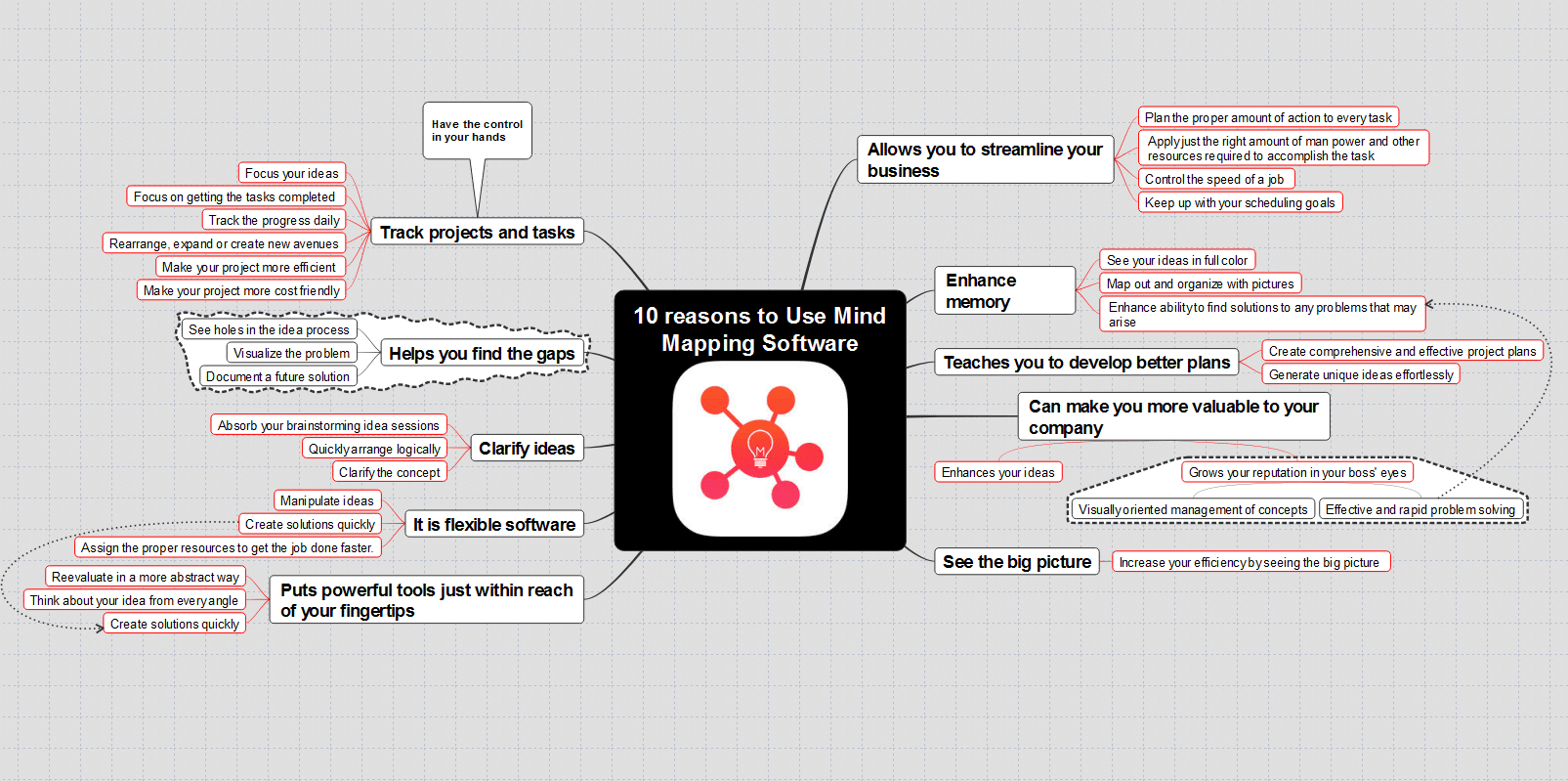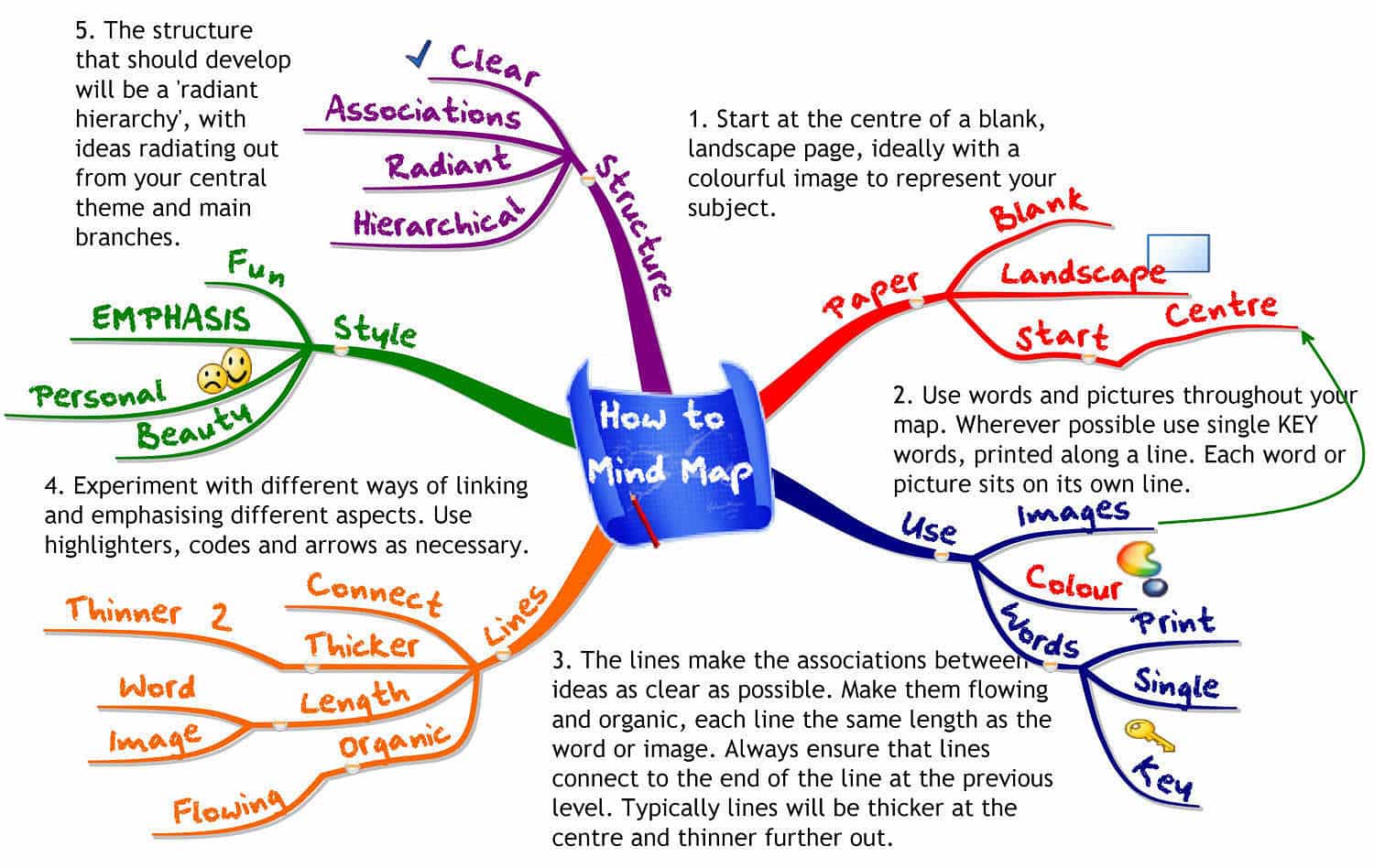This article was last updated on February 23, 2016
A truly “polemicized” topic is to increase productivity, and the eternal struggle is how, right? There are many tools and techniques out there that promise a lot for your productivity and organization skills, but none of them, can truly be a match to mind mapping.
Mind mapping is a great technique for organizing thoughts and it represents quite a breakthrough when it comes to elevating productivity. It becomes a very suitable practice to improve organization, time management and increase productivity.
The basic principles of mind mapping are to always start with a main (central) idea, around which you start adding information that is closely connected with it. You end up with a diagram resembling a net, having interconnections of the main idea with the information or categories that define or describe it. While building your mind map, following your train of thoughts you can get creative by inserting images, colors, interconnections and symbols.
So why is mind mapping such a useful productivity instrument? And the answer is because it works in the same way our brains think. Mind mapping builds upon a non-linear way of connecting information and ideas, in oppose to the usual linear manner of the way we are used to write down information, by following lists and text documents. This manner of presenting ideas stimulates a logical approach on correlating information, and with the use of visual elements, that information has a better chance to be remembered and identified.
Here are four main areas of usage, where mind mapping can act as a facilitator in improving your overall productivity.
How To Use Mind Mapping To Become More Productive
Manage activities and meetings
People are accustomed to have their own rituals to organize time and tasks. Some start with a to-do list, other with simple notes, many use post-it notes, but almost everyone gets lost along the way of prioritizing and handling multiple tasks at once. Mind maps can help to document, arrange, and prioritize tasks and strip down big chunks of work, by providing visual means to logically connect and highlight what’s important.
You can use mind maps to manage tasks you need to complete during a given period of time and save time by having a clearer picture of what lies ahead. Some mind mapping experts claim that through the usage of this technique, users can increase productivity up to 30%. Fairly enough, isn’t it?
When meetings are concerned, it is quite easy to get derailed and away from focus, and mind mapping can aid the whole meeting process, from its planning, agenda organization, to final conclusions. By introducing mind maps in your meetings, you provide solid guidelines for all participants, so it will be easier to manage the discussions. Building a mind map during meetings, helps to focus and establish clearer conclusions that in turn can be easily recorded.

Organize information and data
Before heading to elaborate how mind maps can be used to organize big amounts of data, I have to say that I have tried many methods to do this, and I always came back to mind maps created with a mind mapping software. Using a solution to create mind maps or concept maps, contributes to the flexibility of creating a logical organization and classification of large amounts of data.
I would like to mention that by using a software tool, you have a limitless workspace to build your maps, and the key point to contributing to a greater organization is that you can insert links within the subtopics, that link to a certain document, file or webpage. Also, a solid mind map creator has useful functionalities like insertion of notes, connected pictures, colorful palette schemes etc.
You can use mind mapping to establish a core repository of information, connected to whatever you are working on, whether it is a paper you are preparing, a research, an analysis, a knowledge area or just organizing documents that you have on your computer.

Photo credit: MindMapping.co.uk
Generate creative ideas
Many would attribute mind mapping to innovative generation of ideas, and I cannot refrain from confirming this. This is a method that provides a base for steering individual or group brainstorming sessions, and is a main guiding point to keep the focus on what is meaningful and important.
Visualization is important, especially when trying or hoping for a creative thought to come by, and mind maps are the reliable means to achieve the ultimate goal – become more productive and creative at the same time.
It is a cognitive therapy for your creative cells and it is a must for any individual or professional that aims to work in the creative industry or is involved with the creation of unique ideas. By helping you out to truly see the big picture, you can also make reliable decisions in choosing which ideas are your best fit. Mind maps keep you on point and steer you to accomplishing your goals.
Elaborate plans and projects
If you are into project planning and management, you must have come across an abundance of project management methodologies and mind mapping can be implemented in their design and conceptualization. From start to finish, mind maps can guide your projects, from the initial appointment of the project scope and milestones, to the monitoring of the project implementation and until its completion.
You can break down all project objectives into actual tasks that need to be completed, and monitor the progress through the use of a Gantt chart view – a functionality supported by some mind mapping tools.
What is more interesting about mind mapping it’s its power to present key information and project requirements to all the stakeholders involved in your projects. It also aids the decision making process and enables users to manage problem solving more meticulously.
This technique represents a powerful, flexible and extremely productive tool that acts as a visual executive summary and a starting point to elaborate plans and manage your projects.
Are you still hesitant to try it?
Photo credit: Pixabay





